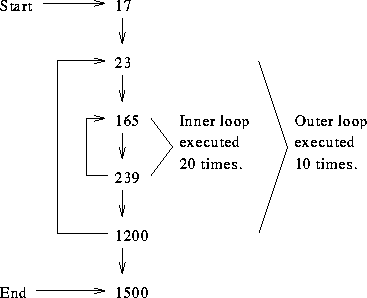- Under what conditions will the Fast Page Mode DRAM be no faster
than ordinary DRAM? I.e., characterize the memory access patterns that
slow it down.
- Are there any memory access patterns that would slow down an EDO
DRAM?
- Characterize the memory access patterns which would cause an
interleaved memory to perform no better than a non-interleaved memory.
- The computer has one interrupt request line.
- Two interrupt request line, INTR1 and INTR2, are available. INTR1
has higher priority.

The memory addresses are in decimal. With the exception of the two branches at addresses 239 and 1200, all instructions utilize straight line sequencing. Each address contains one instruction. The program is to be run on a computer that has an instruction cache organized in the direct-mapped manner and that has the following parameters:

The cycle time of the main memory is 10 s and the cycle time of the
cache is 1
s and the cycle time of the
cache is 1 s.
s.
- Determine the number of bits in the TAG, BLOCK, and WORD fields in
main memory addresses.
- Compute the total time needed for instruction fetching during
execution of the program.
This pattern is repeated four times.
- Show the contents of the cache at the end of each pass through
this loop if a direct mapped cache is used. Compute the hit rate for
this example. Assume that the cache is initially empty.
- Repeat for an associative mapped cache that uses LRU replacement.
- Repeat for a four-way set associative cache.